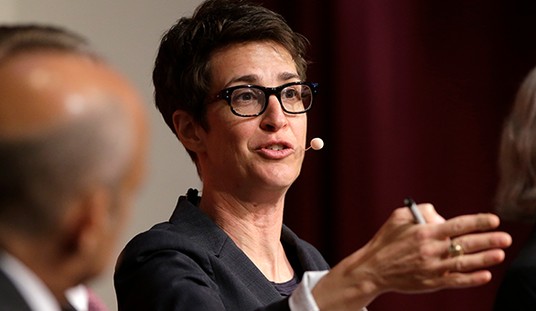Richard Nixon's imposition of wage and price controls in 1971 were among the biggest regrets of his presidency—and he had plenty to regret. Now, Democrat presidential candidate Kamala Harris has announced similar economic plans, signaling that the "passage of time" that has "been unburdened by what has been" will make her impervious to the doom loop promised to those who do not learn history. That is, if she remembers we've seen this dog-and-pony show.
Her plan calls for more money giveaways, vows to regulate business even more, usher in national rent control, make housing more expensive by putting the government in charge of building more houses (see California), and, her pièce de résistance, repealing the law of supply and demand by outlawing "price gouging" at the grocery store by invoking Soviet-style price-setting. Harris has not defined price gouging, but beware government spendthrifts who point their bony, bejeweled fingers at the victims of their inflation-inducing programs and announce, "He did it!"
When Nixon issued rules for wage and price controls, he knew what he was doing was wrong. Indeed, one of his economic aides told the president, a former commie spy hunter, "Pravda would write that this was a sign of the collapse of capitalism" when Nixon and his team unveiled their economic plans, which included taking the country off the gold standard and free-floating the dollar. "We cannot protect the value of the dollar by passing the buck," he'd said one year before in a speech denouncing wage and price controls.
Related: West Coast, Messed Coast™ — Dining, Dashing, and Abortion Doulas Edition
The 37th president, however, faced an inflation rate that had doubled from the 1960s to the 1970s from billions spent on Lyndon Johnson's Great Society and the Vietnam War.
Seeing inflation as an ever-growing threat but unwilling to take what he considered drastic action, Nixon gave a speech in 1969 announcing a switch from a wartime economy to a peacetime one. He made dramatic reductions in Pentagon spending in preparation for winding down the Vietnam War and announced more social spending plans. He refused calls to control wages and prices because he predicted "they would only postpone a reckoning" and said they were worse for the economy than doing nothing.
Nixon issued a throwdown to Congress, demanding they pass his series of bills to address these problems. Instead, Congress dared Nixon to do something drastic when it passed its "Economic Stabilization Act of 1970," giving the president a wide swath of powers. In 1971, Nixon called their bluff and announced a short-term, 90-day experiment in wage and price controls to stabilize the economy. "The President told Congress that his goal was 'a further reduction in the inflation rate to 21/4 per cent or less by the end of 1973,'" according to the New York Times.
Nixon, ever the pragmatist, philosophically disagreed with such economic interference but told his aides, "Now I am a Keynesian." His dalliance with leftist money supply economics wouldn't last long.
Nixon eliminated most of these far-reaching government controls in 1973.
Related: Kamala Caught Red-Handed CHANGING NEWS HEADLINES to Make Her Look Good. Misinfo Police Yawn
The Cato Institute says attempting a command-and-control economy was a disaster.
By the time Nixon reimposed a temporary freeze in June 1973...it was obvious that price controls didn’t work: “Ranchers stopped shipping their cattle to the market, farmers drowned their chickens, and consumers emptied the shelves of supermarkets.”
Nixon rolled back the rules, extinguished the committees, panels, and offices put into their service, and said thanks and goodbye to the people brought in to implement the programs.
The New York Times was stunned at the rollback at the time.
President Nixon ended mandatory wage and price controls today — except for those involving food, health care and construction — and replaced them with a system relying mainly on “voluntary cooperation.” He also ended all Federal rent controls. The actions were effective immediately.
In a sweeping revision of the 17‐month‐old stabilization program, the President called on business and labor to support the program voluntarily. But he said he would back it up with the threat of renewed Government wage and price regulation in situations he deemed to be inflationary.
"As Nobel Prize-winning economist Milton Friedman correctly predicted, however, Nixon’s gambit ended 'in utter failure and the emergence into the open of the suppressed inflation,'" according to the Cato Institute. "The people would pay the price — but not until after he’d coasted to a landslide re-election in 1972 over Democratic Sen. George McGovern," they noted.
In the same year, he ended most of his controls and ended the military draft. Nixon the free-marketeer was back and Friedman convinced the president to create an all-volunteer military.
Nixon would be out of office in August of 1974 because of Watergate. His successor, Gerald Ford, picked up the anti-inflation campaign, issuing WIN pins, which stood for Whip Inflation Now.
Related: Kamala's Hiding Until Early Voting Starts. Here's What Trump Can Do to Break Through.
Jimmy Carter would come into office and make things worse, and it would take another free marketeer—Ronald Reagan—to grow the economy out of the Carter malaise.
At the time, Nixon's command-and-control economy was hugely popular with the people, but eventually, Ronald Reagan and Donald Trump demonstrated that the free market can grow an economy into prosperity.










Join the conversation as a VIP Member